Kitchen Project #112: All about Mulberries
Camilla Wynne gives this berry it's moment in the spotlight
Hello,
Welcome to today’s edition of Kitchen Projects, my recipe development journal. Thank you so much for being here!
Today I have the pleasure of introducing the latest column by Camilla Wynne, our resident preserving expert. For today’s edition, she’s putting the spotlight on Mulberries, the juicy tree berry you’ve probably overlooked. (For anyone reading in London, I suggest checking this map!) Plus a recipe for her perfect crumble, which is what we all need now it’s September.
Over on KP+, Camilla is doubling down on the mulberry crumble love and sharing a recipe for heavenly Mulberry Coffee Rye Crumble Cake. You can get the recipe here.
What’s KP+? Well, it’s the level up version of this newsletter. By joining KP+, you will support the writing and research that goes into the newsletter (including the commissioning - and fair payment - of all the writers) and join a growing community, access extra content (inc. the full archive) and more. Subscribing is easy and only costs £5 per month. Why not give it a go? Come n join the gang!
Love,
Nicola
Upcoming online workshops with Camilla Wynne
If you're interested in taking a deep-dive into preserving your favourite fruits (such as mulberries!), I've got online workshops coming up this fall that will teach you everything you need to know! Whether it's bottled/canned fruits and compotes, jams or candying (and bonus! a layer cake class), my workshops are intended to teach you techniques you can use in many different permutations, allowing you to be creative, as well as teaching the science behind the methods so you know they're safe and effective. Held over Zoom, you can ask questions in real time, though after class everyone receives a recording as well as notes and recipes--so you can always watch later if the date and time don't work, and ask me questions afterwards via email. Hope to see you there!
https://www.camillawynne.com/workshops
All about mulberries
Every summer at some point I begin to notice dark purple blotches staining my front steps, and I know mulberry season has begun. We tragically don’t have a mulberry tree—the closest one I know of is about a block away, but I guess the birds love mulberries so much that they fly around clutching too many for their claws and deposit them throughout the neighbourhood thusly.
Birds seem to enjoy mulberries more than most people, which I find baffling. Very few people in my city seem to regard them as a delicacy, either passing them by entirely or considering them a nuisance. To be fair, many people may not even realize they’re edible, as one never sees them in the supermarket, however this is on account of their soft and juicy nature, which makes them incompatible with commerce. They are far too fragile to ship and have a very short shelf life (though one can fortunately find them at farmer’s markets). Depending on where you live, mulberries will appear at different times of year. Here in Toronto they were ripe in June and July, they have now disappeared (aside from the stash in my freezer), whereas in the UK the season is just ramping up. In India there are two seasons-- fall and spring!
And while it’s true they do make a violet mess of the sidewalks over which they hang, it’s hardly their fault for being planted there. Traditional wisdom has it that a mulberry should be planted on grassy ground, but no one in my city seems to have gotten the memo, so they loom over sidewalks and streets dropping ripe fruit for a continuous month each year. Considering that trees can live over 600 years, one would think they’d have put a bit more thought into the planting! (For the same reason food writer Jane Grigson suggests giving a mulberry tree as a wedding gift but only “if they seem like a staying couple.”)
The mulberry is a symbol of prudence or wisdom, depending on who you ask, since no leaf appears before the last frost. Interestingly, they also make an audible sound when budding, as they do it so quickly, just like another favorite of mine, forced rhubarb.
Of the three classes of mulberries, the black or Persian mulberry is often considered the best to eat. Native to western Asia and grown in the Middle East and Europe for many centuries, its taste can be likened to a sweeter blackberry, though of course it has its own particular charms. There are many varieties of black mulberry, such as the extra-large Peruvian Giant and the extra-long Himalayan, though none are actually berries. They are composite fruits (known as sorosis—the pineapple is as well!), each mulberry a cluster of smaller berries, each born of an individual flower. I shouldn’t think this affects the taste.
White mulberries are the food of silkworms, who eat only the leaves of this particular tree. They have been cultivated in China for this purpose for over 4700 years. The fruit is sweet and lacks the tang of the black mulberry, though they can commonly be found for sale dried.
Lastly, the red mulberry is native to North America, but the fruit is regarded as less tasty than the black, though people certainly enjoy them as well.
If you are lucky enough to have a mulberry tree in your yard (if you’re lucky enough to have a yard!), you might consider laying tarps around the base to catch the fruit, which drops when ripe. The tree can also be shaken to expedite the affair. Either way you’ll have to go back almost daily to profit maximally, as mulberries ripen as different rates over the course of weeks.
As I said, I am not fortunate enough to have a tree, but am lucky to live down the block from a prolific one in front of an abandoned restaurant. I bet you probably live near one as well! I like to go every day in the high season with a Tupperware and pick as many as I can reach. Once we even brought a sheet and tried to shake them down, but it felt a little conspicuous. I’ve also had success leaving notes in people’s mailboxes asking them to text me if it would be alright if I picked from their tree. Generally people are happy to have you pick—it means less mess on the ground if they’re not interested.
However you access the tree, food writers Alan Davidson and Jane Grigson suggest wearing purple clothes for the occasion in order to avoid stains, though I have a tendency to always dress impractically and find stain remover works wonders.
Once you’ve collected your berries, you might freeze them and consider what you’ll do with them later on. They freeze admirably, refusing to stick even when you plop them unceremoniously into a freezer bag. This can be very useful when you’re slowly collecting enough fruit to bake from a single tree over the course of weeks.
Another good way to preserve this fragile and fleeting fruit is to cover them with hot simple syrup and refrigerate, which will give them at least another week of life.
Or, if you’ve been blessed with a motherlode, you might do as Elizabeth David suggests and serve them simply piled in a pyramid formation on a platter lined with their leaves. I dream of this but am generally content to just make at least one batch a year of Kitty Travers’ mulberry granita from her exquisite book, La Grotta Ices.
You might simply use them in any recipe that calls for blackberries or even black currants, though, again, they do lack the acidity of those berries. A friend recently wrote to me to ask what I do with the mulberries I’m always raving about—she has a tree but finds them too sweet. Beyond my beloved granita (which is maybe a perfect vehicle for them because chilling tempers sweetness?), I simply suggested she pick them slightly underripe, a little more purple than black. Their acidity is more vibrant then. I like to always have at least a small amount of these in the mix when baking. If you’re making jam this will also increase their natural pectin levels, though jam maven Lillie O’Brien (of London Borough of Jam) adds apple cider vinegar to her mulberry jam to balance the sugar.
All that to say, mulberries are delicious AND often free for the taking, so I strongly encourage you not to turn your back to them. Perhaps the following two recipes might tempt you to go out with a pail dressed in your purple finery.
Lemon Poppyseed Mulberry Crumble
Simple and satisfying, I personally don’t think there are many desserts cozier than a crumble. This one comes together quickly using fresh or frozen mulberries (though you might have to add a few minutes to the cooking time if the latter). To serve a crowd it doubles well in a 23x33cm (9x13 inch) pan. Actually, you might double it no matter what if you like having the leftovers for breakfast as much as I do.
Serves 4 to 5
Topping
50 g sugar
zest of 1 lemon
150 g all-purpose flour
a fat pinch of salt
100 g unsalted butter, cold, cubed
1 1/2 tsp poppyseeds
Filling
400 g mulberries
3 Tbsp caster sugar
1 Tbsp lemon juice
2 teaspoons cornstarch
pinch of salt
Method
Preheat the oven to 185c fan / 205°C/400°F and butter a pie plate.
To make the topping, in a medium bowl, rub sugar with lemon zest using your fingertips. Stir in flour and salt, then rub in butter until crumbly. Stir in poppyseeds. Reserve in the refrigerator until ready to use. This crumble can be made in advance and kept for a week in the fridge for months in the freezer.
To make the filling, toss all ingredients together in a medium bowl. Transfer to pie plate and cover evenly with topping.
Bake for 30 to 35 minutes, until the filling is bubbling and the topping is golden. Let cool for at least 10 minutes before serving. Serve warm or at room temperature, topped with ice cream, custard or a big dollop of lemon curd.
For Camilla’s recipe for her Mulberry Coffee Rye Crumble Cake cake can be found here.






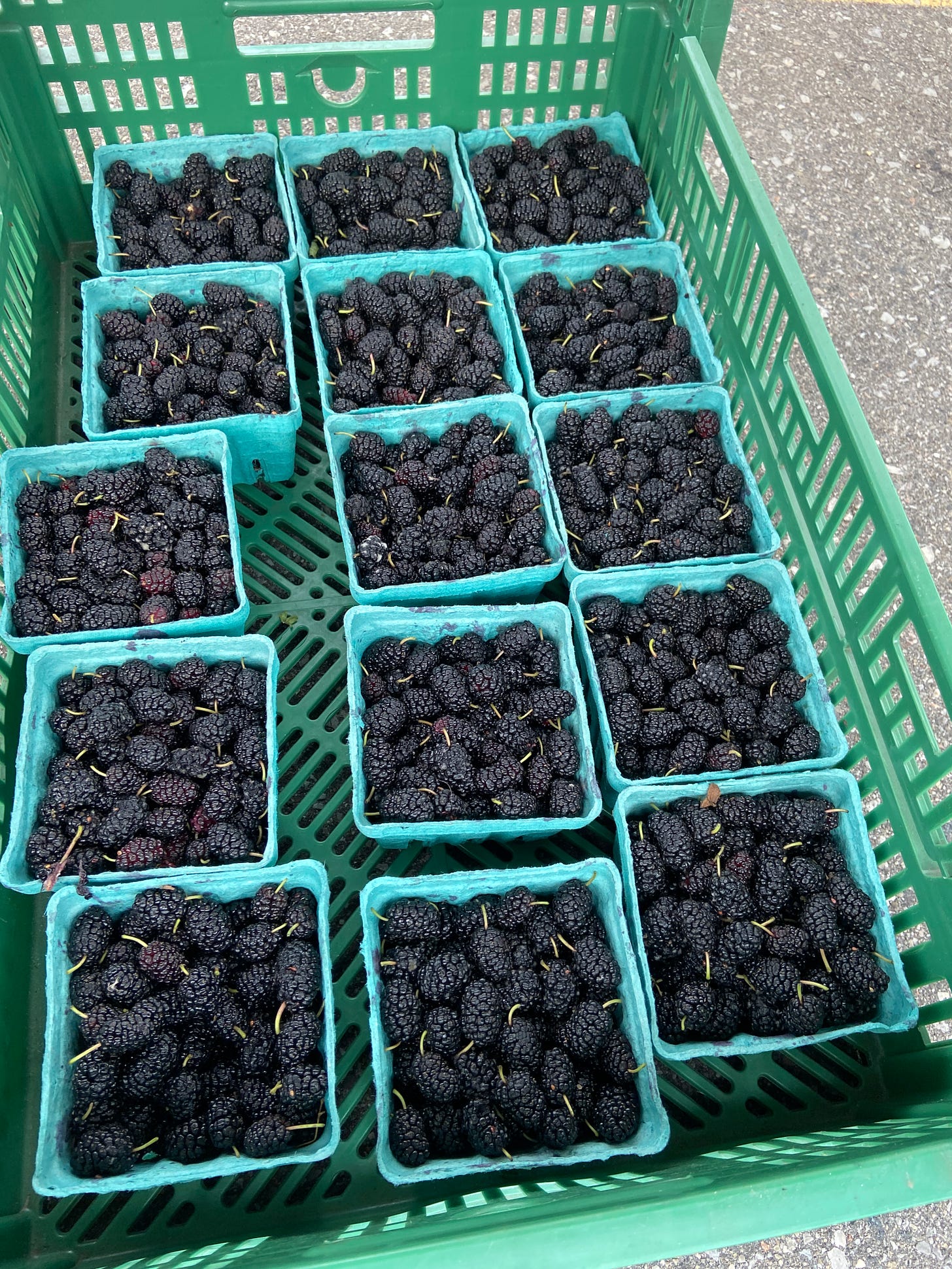
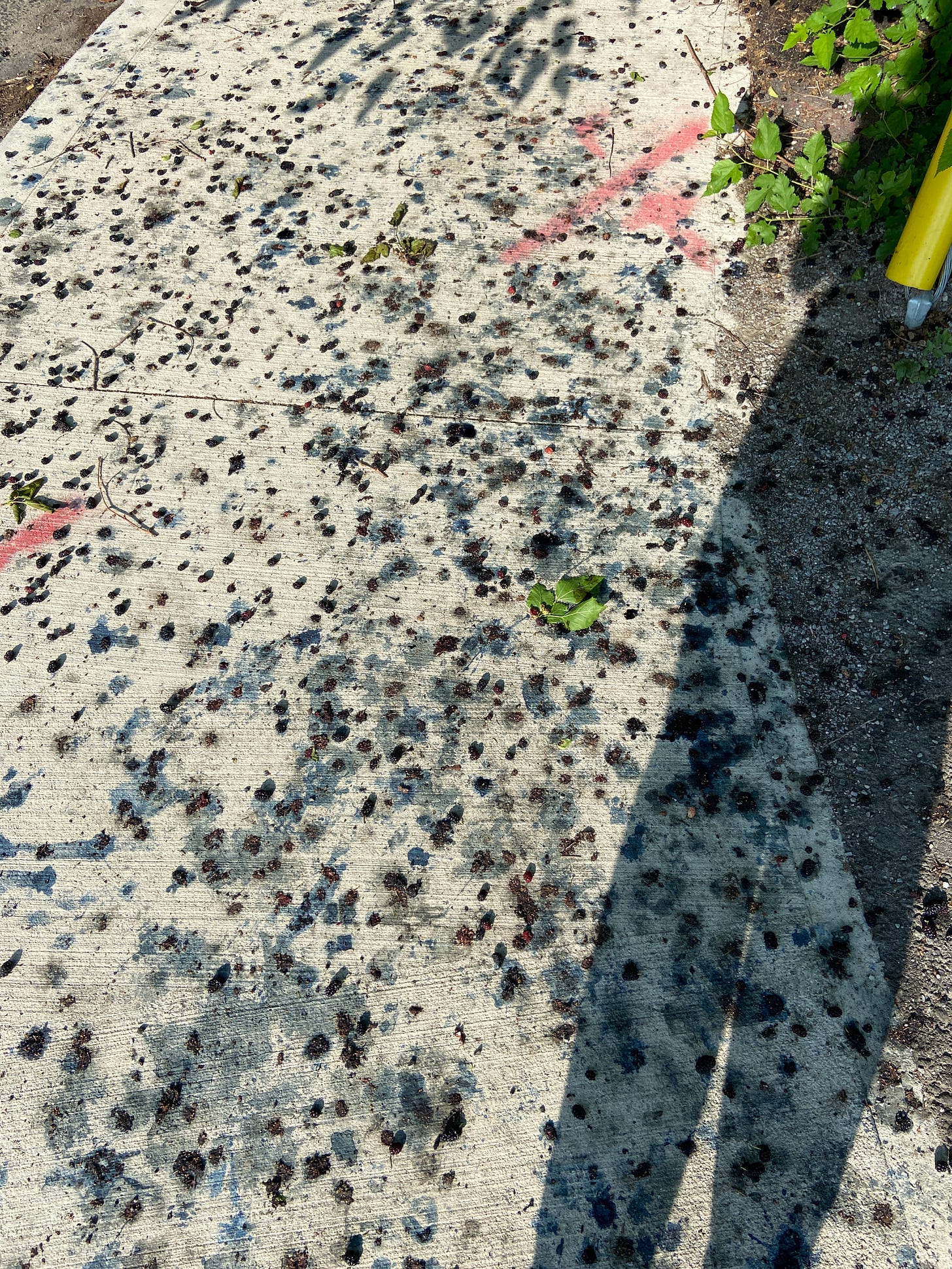
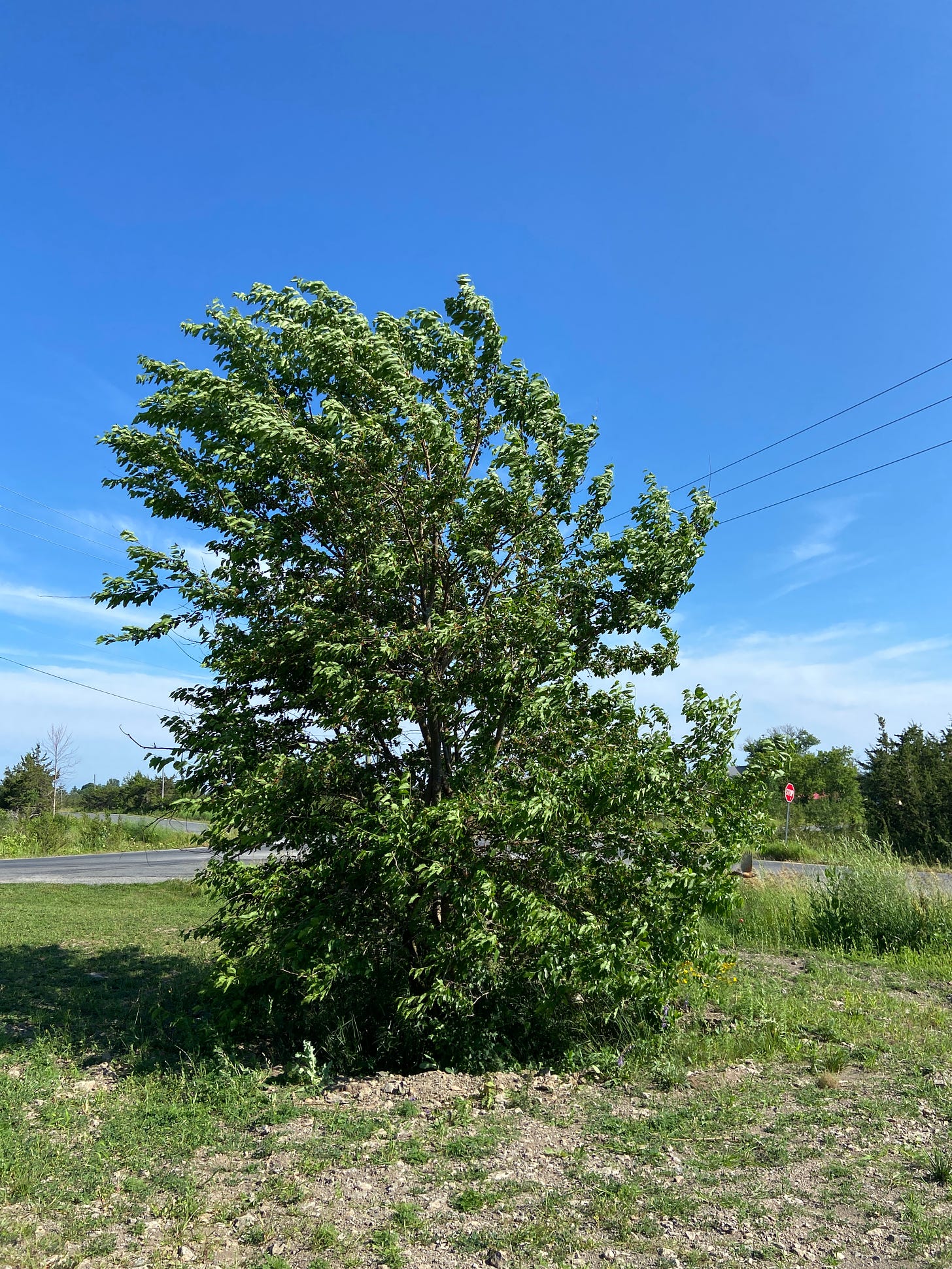

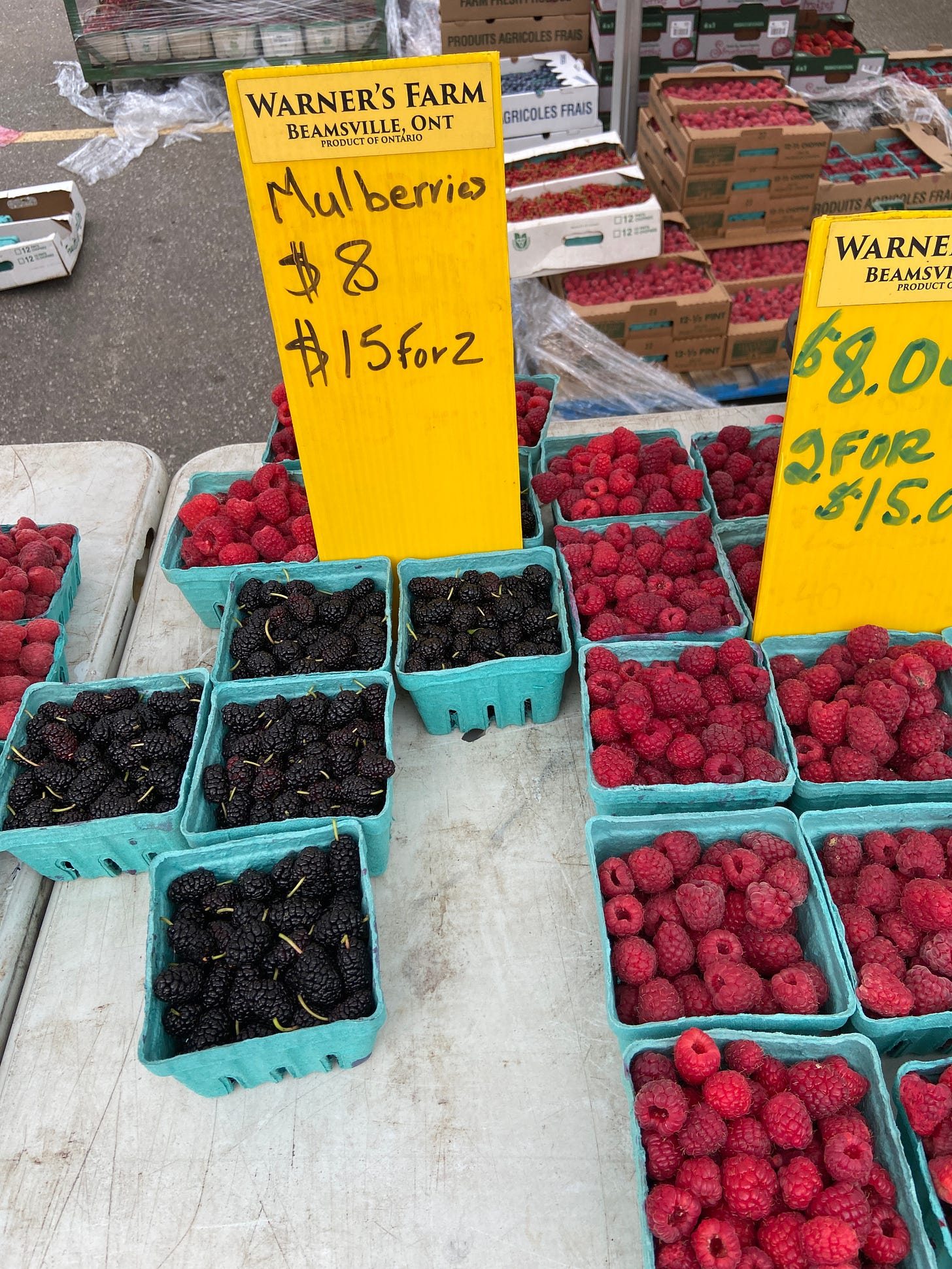
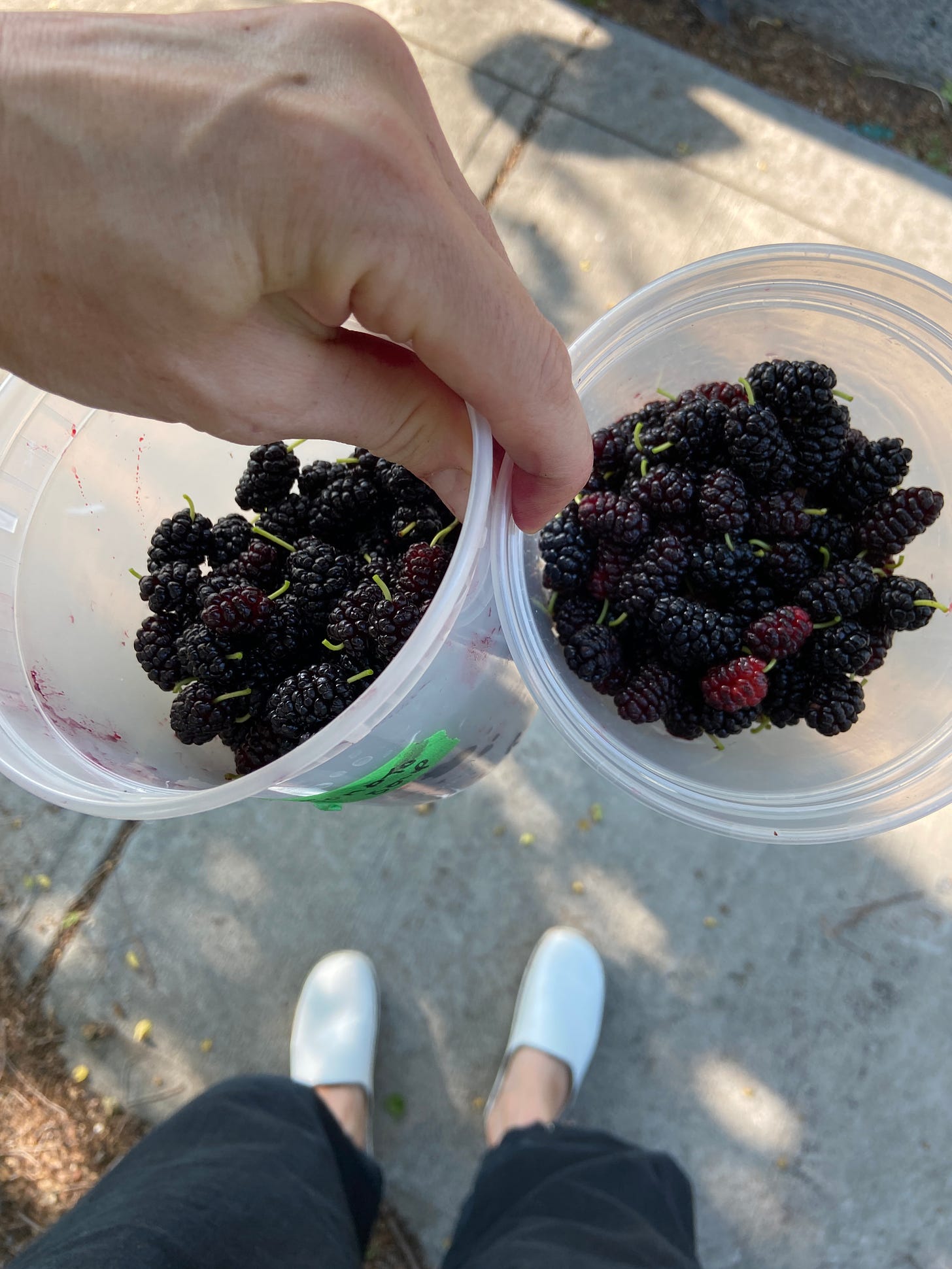

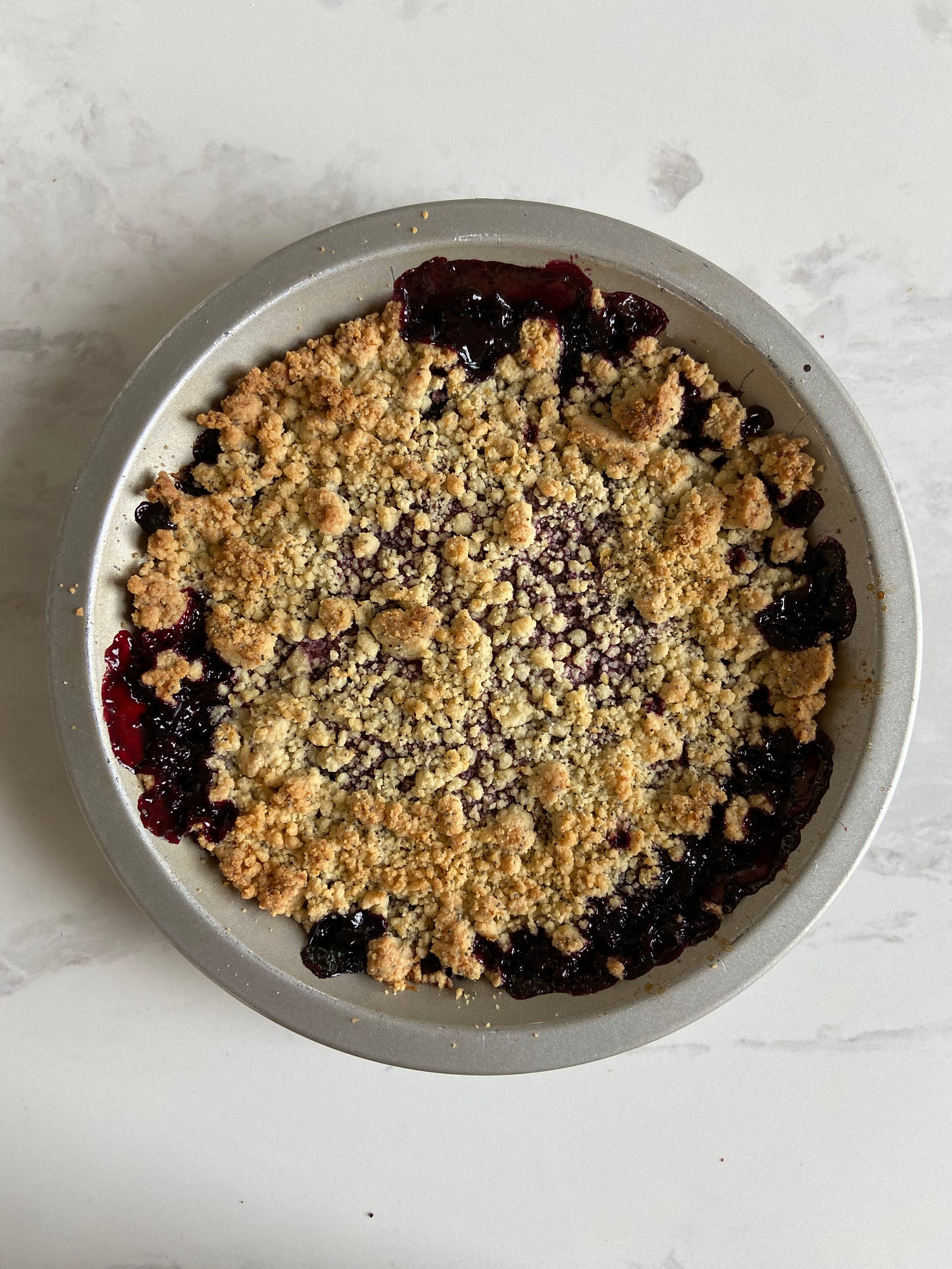
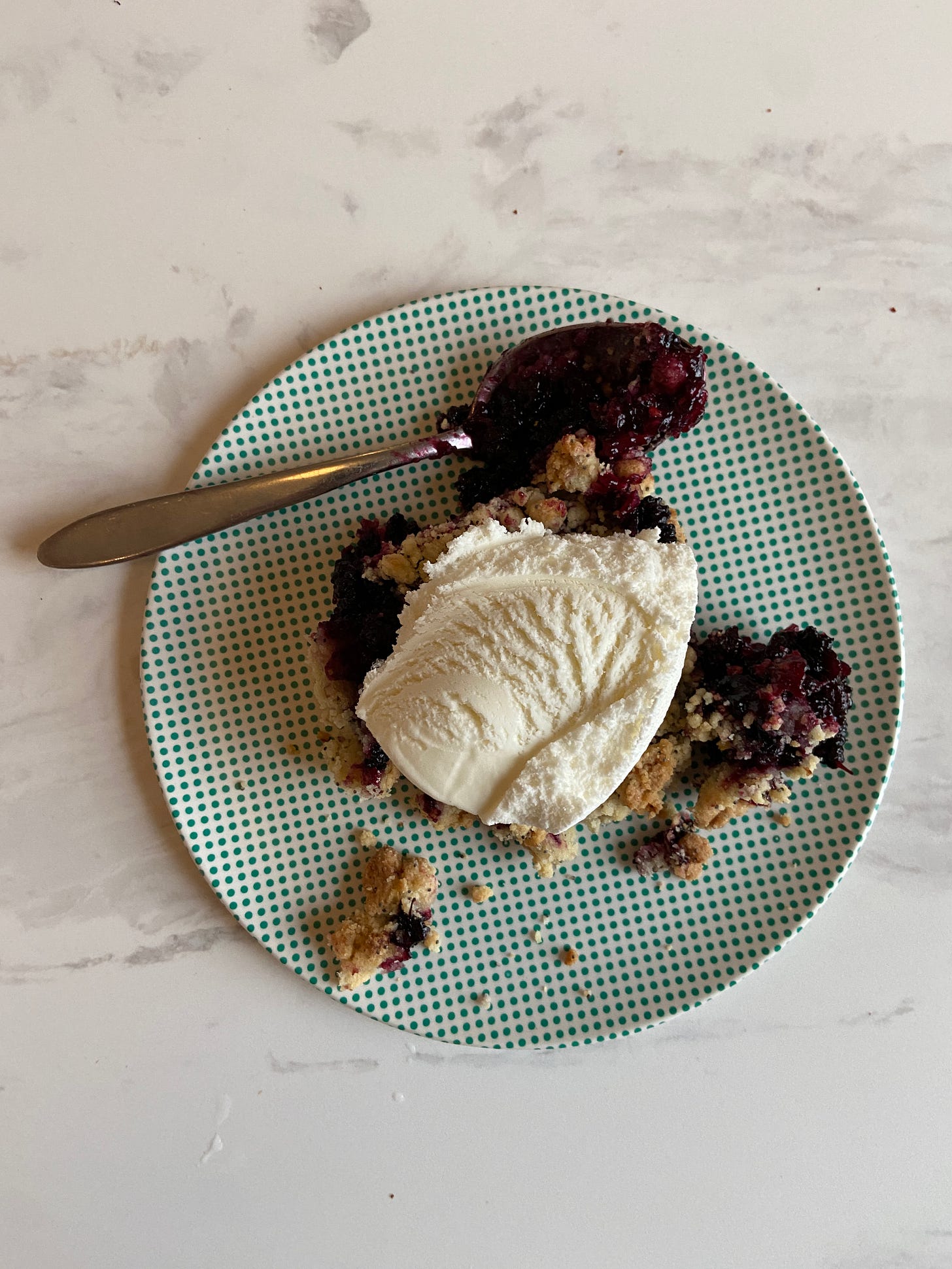

Never seen mulberries here but they are all over the place in Kyiv - the season there was back in June but the pavements were black with the juice!
Love this post!
Our mulberry tree has been raining purple for the past month or so, slowing down now, but will go on for a week or two more.
Have given kilos of them to neighbours and friends, made various cakes and over 20 jars of jam! I add about 20% strawberries to the mulberry jam - just for a flavour and texture boost - works well ☺️
I love mulberrry season!